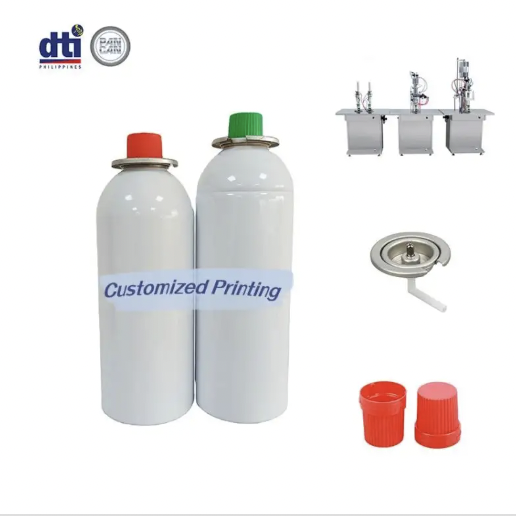Understanding the Impact of EU's New Packaging Regulation on Aluminum Industry
The European Union's Packaging and Packaging Waste Regulation (PPWR) (EU) 2025/40 marks a significant shift in the packaging landscape, particularly for aluminum packaging manufacturers and suppliers. This groundbreaking legislation introduces comprehensive requirements aimed at enhancing sustainability, promoting circular economy principles, and reducing packaging waste across the EU market. For businesses involved in aluminum packaging, this regulatory change presents not just challenges but also unprecedented opportunities for market expansion and innovation.
As the regulation takes effect, companies dealing with aluminum packaging are discovering new avenues for growth and development. The emphasis on recyclability and sustainability aligns perfectly with aluminum's inherent properties, positioning it as a preferred material in the evolving European packaging market. Understanding these opportunities requires a deep dive into both the regulatory requirements and the unique advantages that aluminum brings to the table.
Strategic Market Advantages Under PPWR
Enhanced Recyclability Requirements
The new EU regulation places significant emphasis on recyclability, an area where aluminum packaging naturally excels. With recycling rates already reaching up to 75% in many European countries, aluminum packaging providers are well-positioned to meet and exceed the new standards. The regulation's focus on recyclability creates an immediate competitive advantage for aluminum packaging solutions over less recyclable alternatives.
Companies can leverage this inherent strength by developing even more sophisticated recycling processes and improving their existing collection systems. This presents an opportunity to expand market share by appealing to brands seeking compliant packaging solutions that already meet or exceed the new requirements.
Design for Sustainability
PPWR's emphasis on sustainable design opens new doors for aluminum packaging innovation. The regulation encourages packaging solutions that minimize material usage while maintaining structural integrity. Aluminum's unique properties allow for the creation of lighter yet durable packaging options, meeting both regulatory requirements and consumer preferences.
This focus on sustainable design creates opportunities for aluminum packaging manufacturers to develop new product lines specifically tailored to meet PPWR requirements while addressing evolving market needs. Companies can invest in research and development to create novel designs that optimize material usage and enhance recycling efficiency.

Emerging Market Sectors
Premium Sustainable Packaging
The regulation is creating a new market segment for premium sustainable packaging solutions. Luxury brands and high-end products are increasingly seeking packaging options that combine environmental responsibility with premium appeal. Aluminum packaging, with its sleek appearance and superior recyclability, is perfectly positioned to capture this growing market segment.
Manufacturers can develop specialized product lines targeting luxury brands that need to comply with PPWR while maintaining their premium market positioning. This includes innovative surface treatments, advanced printing techniques, and sophisticated design elements that enhance the perceived value of the packaging.
Food and Beverage Innovation
The food and beverage sector presents significant expansion opportunities under the new regulation. With stricter requirements for food contact materials and increased focus on preservation properties, aluminum packaging solutions can demonstrate their superior barrier properties and food protection capabilities while meeting sustainability requirements.
Companies can explore new formats and sizes that cater to changing consumer preferences while ensuring compliance with PPWR standards. This includes developing specialized solutions for emerging food categories and innovative beverage packaging formats that emphasize convenience and sustainability.
Technological Advancement Opportunities
Smart Packaging Integration
The regulation's requirements for traceability and consumer information create opportunities for integrating smart packaging technologies with aluminum solutions. This includes developing packaging with embedded QR codes, NFC tags, or other digital elements that can provide detailed information about recyclability and proper disposal.
These technological integrations can help brands meet PPWR's requirements for consumer education while adding value through enhanced user interaction and brand engagement. Companies can develop proprietary solutions that combine aluminum's physical properties with digital capabilities.
Manufacturing Process Innovation
PPWR's implementation drives the need for more efficient and sustainable manufacturing processes. This creates opportunities for aluminum packaging manufacturers to invest in advanced production technologies that reduce waste, enhance energy efficiency, and improve overall sustainability metrics.
Companies can develop new manufacturing methodologies that not only ensure compliance but also create competitive advantages through reduced production costs and improved environmental performance. This includes investing in automation, artificial intelligence, and advanced quality control systems.
Collaborative Growth Potential
Supply Chain Partnerships
The regulation encourages closer collaboration across the packaging value chain. Aluminum packaging manufacturers can forge strategic partnerships with material suppliers, recyclers, and end-users to create more efficient and sustainable packaging solutions.
These partnerships can lead to joint innovation projects, shared investment in recycling infrastructure, and integrated approaches to meeting PPWR requirements. Companies can expand their market presence by becoming key players in sustainable packaging ecosystems.
Cross-Industry Solutions
PPWR creates opportunities for aluminum packaging solutions to enter new industries previously dominated by other materials. As different sectors seek compliant packaging options, aluminum's versatility and sustainability credentials make it an attractive alternative.
Companies can develop targeted solutions for specific industries, such as cosmetics, pharmaceuticals, or industrial products, leveraging aluminum's properties to meet sector-specific requirements while ensuring PPWR compliance.
Frequently Asked Questions
How does PPWR specifically benefit aluminum packaging manufacturers?
PPWR benefits aluminum packaging manufacturers by emphasizing recyclability and sustainability, areas where aluminum naturally excels. The regulation creates market advantages for materials with high recycling rates and efficient resource use, positioning aluminum packaging providers to expand their market presence and develop innovative solutions.
What investments are needed to capitalize on PPWR opportunities?
Key investments include upgrading manufacturing processes for enhanced sustainability, developing new product designs that optimize material use, investing in smart packaging technologies, and establishing stronger recycling infrastructure. Companies may also need to invest in research and development to create innovative solutions that meet both regulatory requirements and market demands.
How can companies ensure compliance while maintaining competitiveness?
Companies can maintain competitiveness by focusing on innovation, efficiency improvements, and strategic partnerships. This includes developing new sustainable designs, optimizing production processes, and collaborating with partners across the value chain. Additionally, investing in certification programs and quality assurance systems helps ensure consistent compliance with PPWR requirements.






